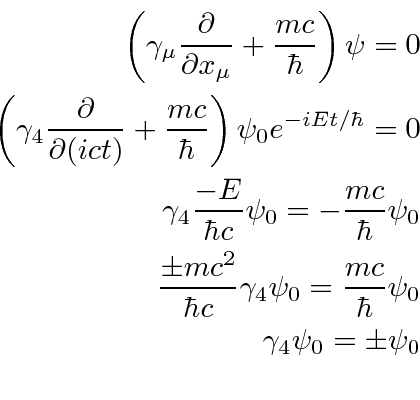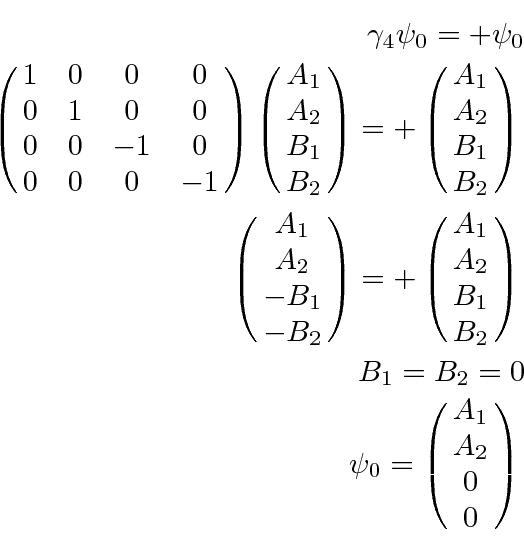Next: Dirac Plane Wave Solution Up: Solution of Dirac Equation Previous: Solution of Dirac Equation Contents
 case of the the solution above so the energy equation gives
case of the the solution above so the energy equation gives
 .
The Dirac equation can now be used.
.
The Dirac equation can now be used.

Lets take the case of positive energy first.

For the ``negative energy solutions'' we have.

Recall that we have demonstrated that the first two components of
![]() are large compared to the other two
for a non-relativistic electron solution and that the first two components,
are large compared to the other two
for a non-relativistic electron solution and that the first two components,
![]() , can be used as the
two component spinor in the Schrödinger equation (with a normalization factor).
Lets identify the first component as spin up along the z axis and the second as spin down.
(We do still have a choice of quantization axis.)
Define a 4 by 4 matrix which gives the z component of the spin.
, can be used as the
two component spinor in the Schrödinger equation (with a normalization factor).
Lets identify the first component as spin up along the z axis and the second as spin down.
(We do still have a choice of quantization axis.)
Define a 4 by 4 matrix which gives the z component of the spin.
![\begin{eqnarray*}
\Sigma_z&=&{1\over 2i}(\gamma_1\gamma_2-\gamma_2\gamma_1) \\
...
...a_y] \cr} \\
&=&\pmatrix{\sigma_z & 0 \cr 0 & \sigma_z \cr} \\
\end{eqnarray*}](img4240.png)
So the four normalized solutions for a Dirac particle at rest are.

|
 |
Jim Branson 2013-04-22